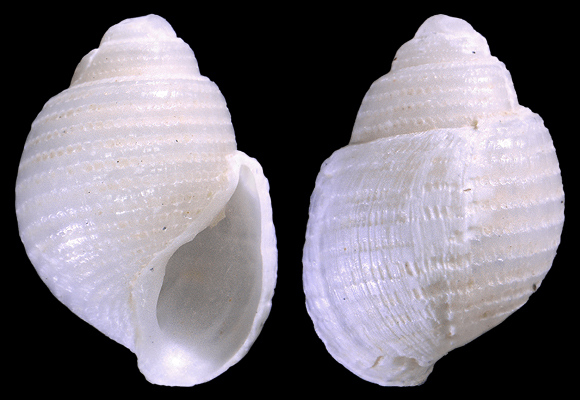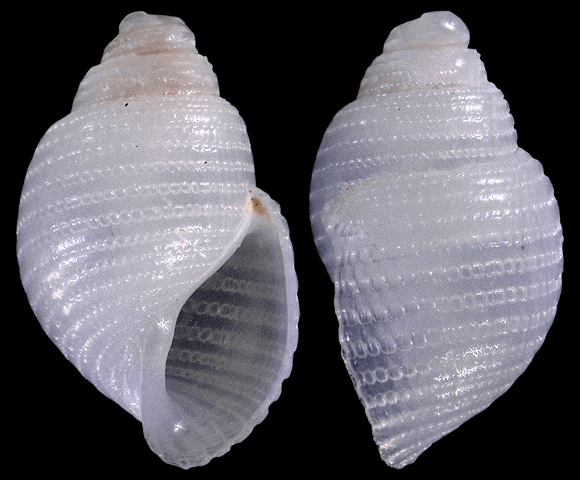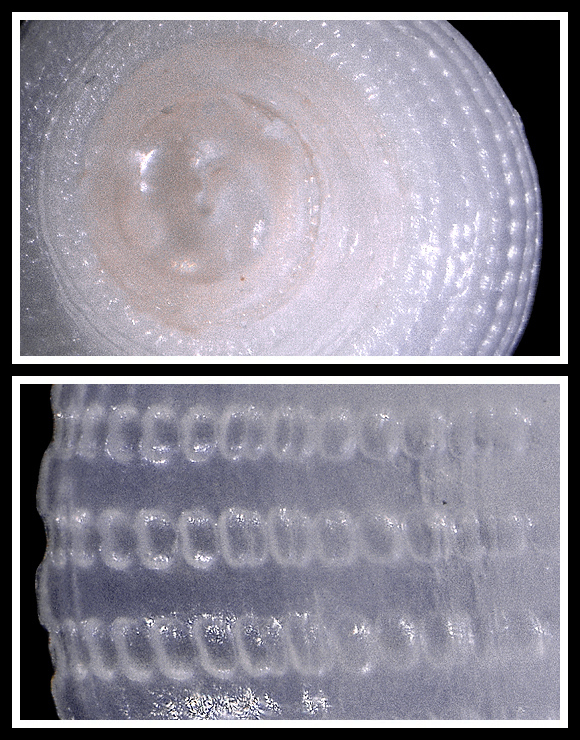
The sculpture is close to that of Japonactaeon pusillus (Forbes, 1844), but Dautzenberg notes an important pair of differences: in monterosatoi, the columella is not as markedly twisted anteriorly as it is in pusillus, and the subsutural ramp is more pronounced, giving the spire a more scalariform appearance. – 75m deep, in shell grit, Bozcaada island, Çanakkale province, W. Marmara, NW. Turkey. 2,5mm.

« Shell thin, elongated oval. Spire fairly high, composed of 5 stepped, slightly convex whorls, separated by a well marked suture. Last whorl proportionally large, swollen. The entire surface of the shell, with the exception of the embryonic whorl, which is smooth, is lined with decurrent series of small rounded cupules. Under low magnification these cupules look like punctuations and there are about 24 series of them on the last whorl and 5 on the penultimate. The pyriform aperture occupies &frac47; of the total height. Columella straight, without apparent fold. Labrum weakly arched. Colouring a dirty white, uniform. » – Ph. Dautzenberg: “Contribution à la faune malacologique des Iles Açores”, Résultats des Campagnes Scientifiques Accomplies sur son Yacht par Albert Ier Prince Souverain de Monaco, Fascicule I, Monaco 1889, p.20 via BHL.
Above and below:
300-400m deep, in the Strait of Gibraltar. 2,7mm.
